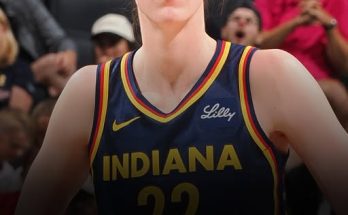When evaluating rookie tight ends to add to your fantasy football or NFL roster, the decision often comes down to a mix of talent, opportunity, and scheme fit. Tight ends traditionally take a bit longer to develop compared to other positions, but every now and then, a rookie emerges who can make an immediate impact. In the 2025 rookie class, there are a few standout prospects who have caught the eye of scouts and fantasy managers alike. Deciding which one to roster requires a deeper look into their skill sets, college production, team fit, and potential to see the field early.
One of the most intriguing rookie tight ends this year is Michael Mayer from Notre Dame. Mayer has consistently proven himself as a reliable pass-catcher and physical blocker, making him a well-rounded prospect. During his college career, Mayer amassed impressive stats, including multiple seasons with over 800 receiving yards and consistent touchdown production. Known for his precise route running and strong hands, Mayer has the tools to be a quarterback’s safety valve at the next level. What makes him particularly enticing is his ability to make contested catches and thrive in red-zone situations. Teams that utilize tight ends as primary receiving options will undoubtedly see his value immediately.
However, talent is only part of the equation. Landing spot and offensive scheme play significant roles in determining a rookie tight end’s immediate impact. If Mayer finds himself on a team with a proven quarterback who targets tight ends frequently—think of how Patrick Mahomes utilizes Travis Kelce—his fantasy potential skyrockets. On the other hand, landing on a run-heavy team or one with a shaky quarterback situation could hinder his production.
Another rookie tight end worth considering is Dalton Kincaid out of Utah. Kincaid is known for his athleticism and big-play ability, often stretching the field with his speed and elusiveness. He’s more of a receiving threat than an in-line blocker, which could limit his snap count early on. However, his ability to make splash plays and his knack for getting open in zone coverage make him an appealing option, especially in offenses that favor mismatches and creative usage of tight ends. Kincaid’s ceiling is undoubtedly high, but his floor might be a bit lower compared to a more well-rounded player like Mayer.
Fantasy managers should also keep an eye on Luke Musgrave from Oregon State. Musgrave is another athletic freak, standing tall with a wide catch radius and the speed to challenge defenses down the seam. His college production was somewhat limited due to injuries, but the physical traits are undeniably tantalizing. If Musgrave lands with a team willing to be patient with his development, he could become a dynamic weapon as his role expands. Still, there’s inherent risk in betting on potential without proven production, and fantasy managers must weigh that when making roster decisions.
One dark horse candidate to consider is Tucker Kraft from South Dakota State. Coming from a smaller program, Kraft lacks the high-profile resume of some of his peers, but his physicality and aggressive play style have drawn comparisons to some of the NFL’s tougher tight ends. His ability to break tackles and gain yards after the catch makes him a potential sleeper pick. The downside is that he may take longer to adjust to the speed of the NFL, and his blocking technique will need refinement to secure consistent playing time.
When selecting a rookie tight end, it’s essential to consider not only their raw talent but also the context of their situation. An elite prospect on a struggling team might underperform compared to a slightly less talented player in a high-octane offense. Additionally, rookie tight ends are often asked to block more than they are used to in college, which can slow down their progression as pass-catchers. Understanding how each player’s strengths align with their team’s philosophy will give you a clearer picture of their year-one potential.
If you’re building a dynasty fantasy roster, it’s crucial to project not just immediate output but long-term viability. While Mayer appears the safest bet given his balanced skill set and proven track record, Kincaid’s upside as a dynamic receiver is hard to ignore. Musgrave offers tantalizing athleticism, while Kraft brings a rugged, physical presence that could yield unexpected production. Balancing risk and reward is vital, and knowing your league’s scoring settings will help determine the best fit.
Ultimately, the rookie tight end you should want on your team is the one whose skill set best matches your roster needs and the offensive environment they land in. While Mayer is likely to be the consensus choice due to his reliability and versatility, Kincaid’s big-play potential and Musgrave’s athletic upside offer plenty of intrigue. Keep a close eye on training camp reports and preseason performances, as these can provide valuable insights into how each player is being utilized and how quickly they are acclimating to the professional game.
Whether you’re looking for a dependable starter or a high-upside stash, this rookie tight end class offers a variety of intriguing options. Draft wisely and consider both the short-term and long-term outlook when making your choice.



